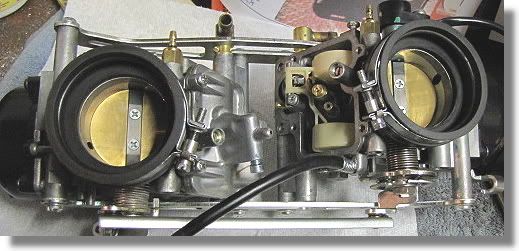Don't understand the concern about this issue. The dirty throttle valves apparently don't have any significant effect on the operation of the engine. If the throttle grip becomes difficult to turn due to dirty, high friction throttle valve pivots then you've got a problem which needs attention. If the throttle valves won't close properly for a good idle rpm that's obviously a problem.
As to the location of the dirt on the throttle valves that's caused by typical air flow patterns. When you're running along in high gear at a fairly constant engine speed the throttle valves aren't open all that much. The throttle valve air follows two basic paths. About half the air flow passes over the top half of the valve on its way to the engine. That's high velocity air so the dirt is carried along with the air into the engine. The remaining air flow passes below the lower edge of the throttle valve. From the valve's lower edge up to the center pivot the flow is stagnant, turbulent air which leaves a dirty deposit on the valve. No significant velocity to sweep it away.
As to the location of the dirt on the throttle valves that's caused by typical air flow patterns. When you're running along in high gear at a fairly constant engine speed the throttle valves aren't open all that much. The throttle valve air follows two basic paths. About half the air flow passes over the top half of the valve on its way to the engine. That's high velocity air so the dirt is carried along with the air into the engine. The remaining air flow passes below the lower edge of the throttle valve. From the valve's lower edge up to the center pivot the flow is stagnant, turbulent air which leaves a dirty deposit on the valve. No significant velocity to sweep it away.
































































